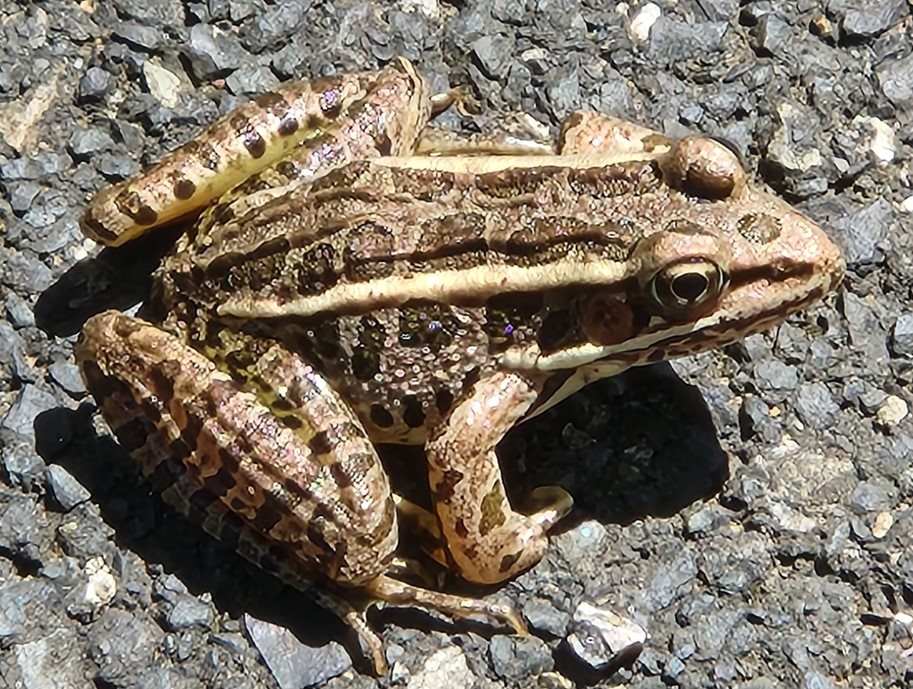What Do Pickerel Frog Calls Sound Like?
The Pickerel Frog mating call sounds like a “snore” that lasts about two seconds, and range from 1.04 seconds to 2.20 seconds. The “pulse rate” or speed of these snores is about 45 pulses per second, which makes the individual pulses relatively indistinguishable in the field.
Pickerel Frog sounds are one of about 30 true frog croaks in the United States and one of about 100 frog and toad noises.
Pickerel Frogs (Lithobates palustris) also make a few additional noises. For example, they make aggressive calls that may sounds like growls. These have a lower pitch compared to the mating call. They sometimes also emit throaty noises or a “gunk!” sound.
Check out the video below to hear and see a Pickerel Frog calling:
Why Does the Pickerel Frog Call?
Like most frogs, the primary reason that Pickerel Frogs call is to attract mates. Only males Pickerel Frogs make an “advertisement” or mating call, and this is the noise that is most commonly heard.
Interestingly, larger males make longer calls, on average. This means that croaks can hint at physical size to females, allowing them to choose their male partners based on size, at least in part.
When Do Pickerel Frogs Make Noise?
Pickerel Frog mating calls are heard from late winter into early summer, though the exact timing depends on location. For example, in southern states calling often starts in February; in Northern states calling may begin in April.
Like all frogs, Pickerel Frogs’ croaking is influenced by water temperature. They typically start making mating vocalizations when water temperatures exceed about 50 degrees Fahrenheit.

Where Do Pickerel Frogs Call From?
Pickerel Frogs have a few preferred breeding – and thus calling – habitats. In general, they gravitate toward larger lakes and ponds, though they have sometimes been found in smaller ponds, reservoirs, ditches, streams, and vernal pools.
While many frogs avoid ponds with fish, it appears that Pickerel Frogs are less discriminating in this regard and will breed in ponds with and without predatory fish.
In short, if you’re near a water source during breeding season, it’s possible you’ll hear the sounds of a Pickerel Frog.
References
This sound guide draws from several sources, including several AmphibiaWeb and Animal Diversity Web, The Frogs and Toads of North America (2009) by Elliott, Gerhardt, and Davidson and Frogs and Toads of the United States and Canada (2013), by C. Kenneth Dodd.
